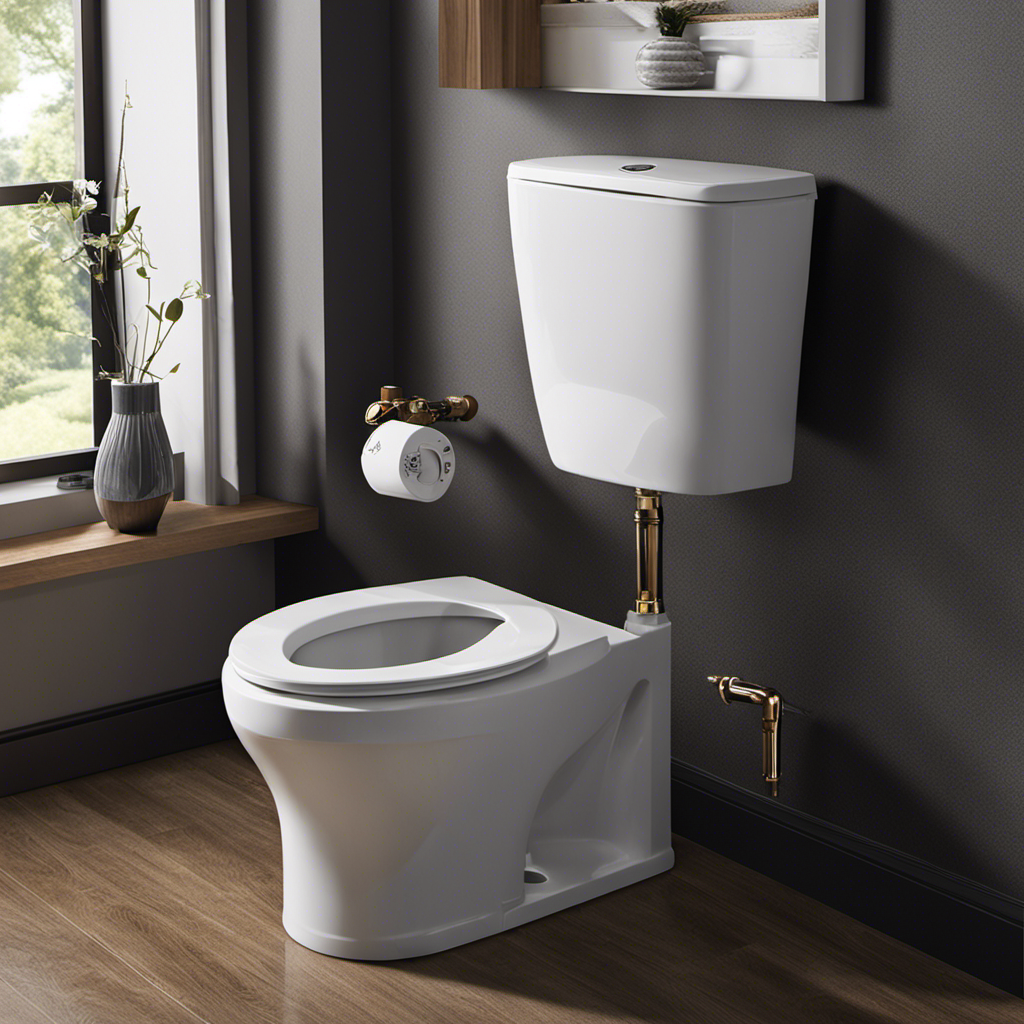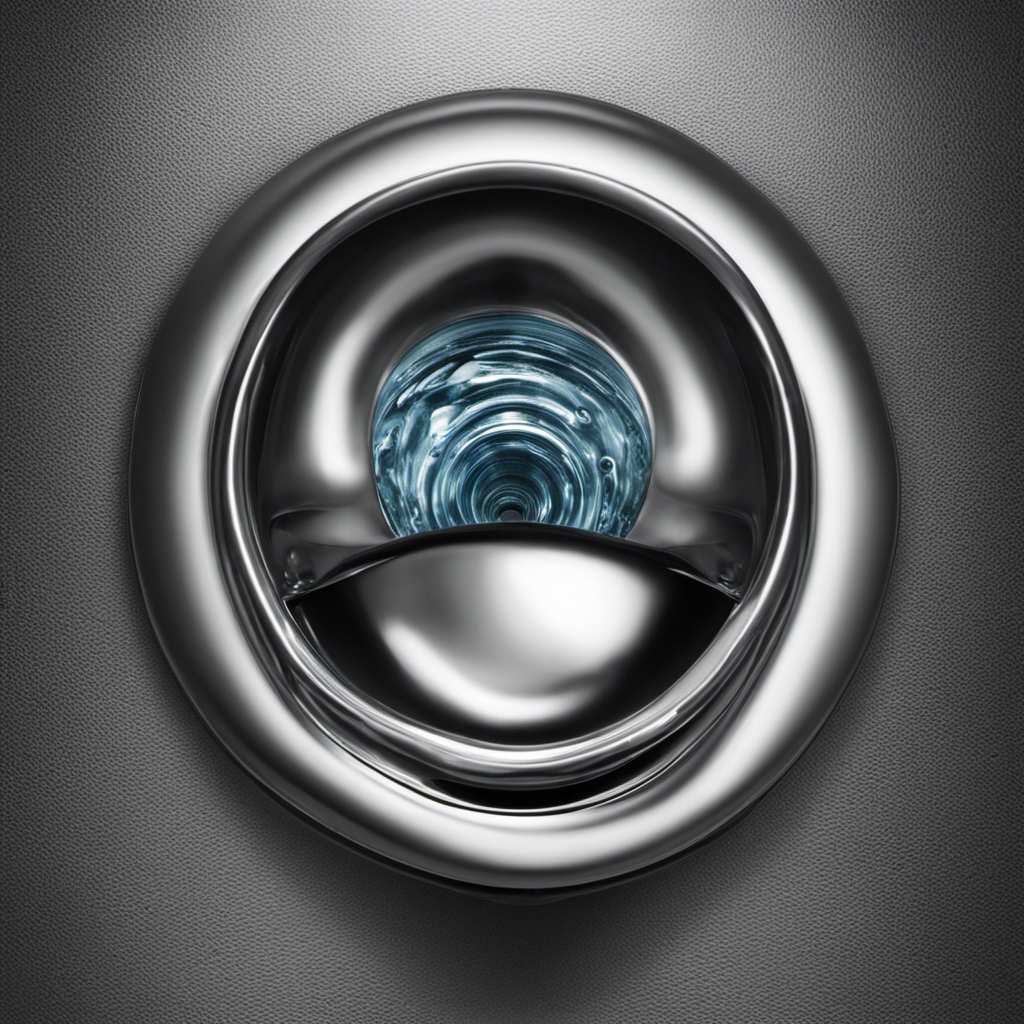So, you’re sitting on your porcelain throne, enjoying some much-needed alone time, when suddenly you hear that familiar sound of water rushing into the toilet tank.
Ever wondered what’s behind that magical mechanism? Well, my friend, allow me to enlighten you.
The fill valve, a crucial component of your toilet, is responsible for refilling the tank with water after each flush. In this article, I’ll break down its purpose, components, functionality, signs of a faulty valve, and even guide you on how to replace it.
Let’s dive in, shall we?
Key Takeaways
- A fill valve is a crucial component of a toilet system as it controls the water flow into the tank and allows it to refill after each flush.
- The fill valve is responsible for maintaining optimal water levels in the tank and is important for water conservation.
- It works by using a float that rises and falls with the water level in the tank, opening the fill valve when the water level drops.
- Signs of a faulty fill valve include continuous water running in the tank after flushing, which can lead to water wastage and higher utility bills. Troubleshooting and maintenance may involve adjusting the float arm or replacing the fill valve.
Purpose of a Fill Valve
The fill valve is what controls the water flow into your toilet tank, allowing it to refill after each flush. It plays a crucial role in the overall functioning of your toilet system.
One important aspect to consider is the importance of water conservation in toilet fill valves. With the increasing need to conserve water, it is essential to choose a fill valve that is efficient and minimizes water wastage.
There are different types of fill valves available in the market, each with its own unique features and benefits. Some common types include ballcock fill valves, diaphragm fill valves, and float cup fill valves.
It is important to understand the different options and choose the one that best suits your needs in terms of water conservation and overall performance.
Components of a Fill Valve
One important component of a fill valve is the float. The float is a small, buoyant device that is attached to the fill valve assembly inside the toilet tank mechanism. Its main function is to regulate the water level in the tank by rising and falling with the water level. When the water level drops, the float drops with it, opening the fill valve and allowing water to enter the tank. As the water level rises, the float rises as well, closing the fill valve and stopping the flow of water. This ensures that the toilet tank is always filled with the right amount of water for proper flushing. The float is a crucial part of the toilet water supply system, as it helps maintain the optimum water level in the tank.
| Component | Function | Importance |
|---|---|---|
| Float | Regulates water level in tank | High |
| Fill Valve | Controls water flow into tank | High |
| Flapper | Seals tank to prevent water from leaking into bowl | High |
| Flush Handle | Initiates flushing mechanism | Medium |
| Overflow Tube | Prevents tank from overflowing | Medium |
How a Fill Valve Works
To understand how a fill valve works, it’s important to know the function of the float. The float is a small, buoyant device that rises and falls with the water level in the toilet tank.
When the water level drops after a flush, the float lowers, activating the fill valve. This valve then opens to allow water to flow into the tank, refilling it to the desired level.
There are different types of fill valves available, each with its own benefits. Some common types include the ballcock fill valve, the diaphragm fill valve, and the pressure-assisted fill valve. These valves ensure efficient and reliable water flow, preventing water wastage and maintaining optimal water levels in the tank.
Understanding how a fill valve works is crucial, as it helps identify signs of a faulty fill valve.
Signs of a Faulty Fill Valve
When water continuously runs in the tank after flushing, it’s likely a sign of a faulty fill valve. This is one of the most common fill valve problems that homeowners encounter. The fill valve is responsible for refilling the tank after each flush, and when it malfunctions, it can lead to water wastage and higher utility bills.
Troubleshooting a faulty fill valve involves a few simple steps. First, check the water level in the tank and adjust the float arm if necessary. If that doesn’t solve the issue, inspect the fill valve for any debris or blockages and clean it thoroughly. In some cases, the fill valve may need to be replaced altogether.
Understanding the signs of a faulty fill valve is crucial for maintaining a properly functioning toilet. Now, let’s move on to the next section, which will guide you through the process of replacing a fill valve.
How to Replace a Fill Valve
Now, let me show you how you can easily replace a faulty fill valve in your toilet. Toilet maintenance is crucial for the smooth operation of your bathroom fixtures.
If you’re experiencing issues with your toilet not filling properly, it may be a sign of a faulty fill valve. Here’s how you can troubleshoot and replace it:
- First, turn off the water supply to the toilet.
- Empty the tank by flushing it and removing any remaining water.
- Disconnect the supply line from the bottom of the tank.
- Remove the old fill valve by unscrewing it from the tank.
- Install the new fill valve by securing it in place and reconnecting the supply line.
- Turn on the water supply and adjust the float to the desired water level.
Frequently Asked Questions
Can a Faulty Fill Valve Cause a Toilet to Overflow?
Yes, a faulty fill valve can cause a toilet to overflow. It may fail to shut off the water flow, leading to continuous filling and eventual overflow. To repair a fill valve, you can replace it with a new one.
How Long Does a Fill Valve Typically Last Before Needing Replacement?
Having knowledge about the lifespan of a fill valve is essential. Typically, a fill valve lasts for 5-10 years before replacement is necessary. To test a fill valve, check for signs of a failing valve such as constant running or slow filling.
Are There Any Common Troubleshooting Tips for a Fill Valve That Is Not Filling the Tank Properly?
When troubleshooting a fill valve that isn’t properly filling the tank, there are a few common tips to try. Check the water supply line for any obstructions, adjust the float arm to the desired level, and ensure the valve is properly installed.
Can a Fill Valve Be Repaired, or Does It Always Need to Be Replaced?
A fill valve on a toilet can sometimes be repaired, but it may also need to be replaced. Signs of a malfunctioning fill valve include slow filling, constant running, or water leakage. Common fill valve repair techniques include cleaning or replacing the valve.
Are There Any Specific Maintenance Steps to Follow to Keep the Fill Valve in Good Working Condition?
Toilet fill valve maintenance is crucial for optimal performance. Regular inspection and cleaning can prevent issues. Look for signs of a faulty fill valve, such as slow filling or constant running. Prompt repair or replacement may be necessary.
Conclusion
In conclusion, understanding the importance of a fill valve on a toilet is crucial for maintaining a properly functioning bathroom.
This small but mighty component is responsible for regulating water flow, ensuring efficient flushing, and preventing water wastage.
Just like a well-oiled machine, a toilet with a faulty fill valve can throw things off balance, leading to frustration and inconvenience.
So, don’t let your toilet’s performance go down the drain! Keep an eye out for any signs of a faulty fill valve and replace it promptly to keep your bathroom running smoothly.










